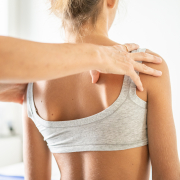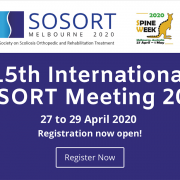SOSORT Melbourne: 8 Isico abstracts
There are 8 abstracts, which will be presented by Isico at the annual Sosort international conference, held from May 1–5 in Melbourne, Australia.
Once again, Isico will be in the front row at the International SOSORT meeting, and one of the abstracts, entitled “Developing a new tool for scoliosis screening in a tertiary specialist setting using artificial intelligence: a retrospective study on 10,813 patients,” is also competing for this edition of the Sosort Award, which, as we recall, Isico won for several consecutive years.
The other abstracts that will be presented by our expert physiatrists, Dr Sabrina Donzelli, and Dr Fabio Zaina, and by Michele Romano, Director of Physiotherapy at Isico, are:
– Adherence to physiotherapeutic scoliosis-specific exercises during adolescence: voices from patients and their families: a qualitative content analysis;
– Bracing interventions can help adolescents with idiopathic scoliosis with surgical indications:
– A systematic review; SOSORT Guidelines for scoliosis conservative treatment: an update
– It is worth treating an adolescent with idiopathic scoliosis when bone maturity has passed US Risser 2: Bracing can improve curves and aesthetics
– Outcome measures in scoliosis treatment: Is the Cobb angle enough?
– The apex vertebrae of the scoliotic curves; a study of their frequency in 11758 cases
– Evaluation of thoracic flexibility in the sagittal plane with the Thoracic Stiffness Test: intra- and inter-operator reliability
Therefore, a reconfirmation for Isico with full marks among the best researchers in the world in the rehabilitation treatment of spinal pathologies.



